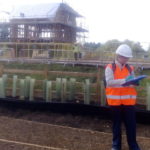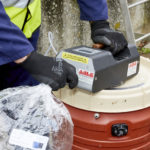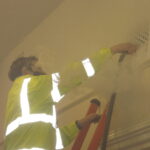WHY ODOUR MONITORING IS IMPORTANT

ODOUR MONITORING
1. WHY DO I NEED TO MONITOR ODOUR?
As a starting point, it is crucial to consider your objectives. They will help inform the approach you take. Generally speaking, there are three reasons you might be looking into odour monitoring.
Planning
 In the planning stages of a new development, you must consider its potential odour impact. Usually, planning authorities will demand evidence that you have done so. This is because odour emissions can affect potential residents and nearby communities. In turn, this may result in legal consequences.
In the planning stages of a new development, you must consider its potential odour impact. Usually, planning authorities will demand evidence that you have done so. This is because odour emissions can affect potential residents and nearby communities. In turn, this may result in legal consequences.
To begin monitoring odour for planning, take a look at these helpful references:
Permit Compliance & Operational Best Practice
 Odour monitoring can help you assess how effective your odour control measures are. Regular checks will help you prevent or promptly address any issues. Consider nominating specific staff members to track perceived odour levels around your site. Regular and consistent monitoring should form part of your best practice measures. It may also form an odour condition in your environmental permit.
Odour monitoring can help you assess how effective your odour control measures are. Regular checks will help you prevent or promptly address any issues. Consider nominating specific staff members to track perceived odour levels around your site. Regular and consistent monitoring should form part of your best practice measures. It may also form an odour condition in your environmental permit.
The Environment Agency offers comprehensive advice on how to comply with your environmental permit in their H4 Odour Management guidance.
Complaints Management
 If you have received odour complaints, your goal might be to understand the source of the problem. Odour monitoring can provide the answers you need. You can then use the knowledge to enhance your odour management strategy. Additionally, demonstrating a successful response to complaints may be useful in court proceedings. Proactively addressing odour problems can also help you build relationships with the community. In turn, this will benefit your site’s reputation.
If you have received odour complaints, your goal might be to understand the source of the problem. Odour monitoring can provide the answers you need. You can then use the knowledge to enhance your odour management strategy. Additionally, demonstrating a successful response to complaints may be useful in court proceedings. Proactively addressing odour problems can also help you build relationships with the community. In turn, this will benefit your site’s reputation.
I have engaged Silsoe Odours for a series of odour investigations relating to ongoing legal proceedings with a neighbour at one of our sites. The team are always professional and willing to oblige. I would be happy to recommend their services. RODDY McDONALD, SCOTTISH WATER
2. WHY IS ODOUR MONITORING IMPORTANT?
As we said above, odour monitoring is something you might be thinking about because you have to. Perhaps you have received odour complaints. Or, you may have received advice from the regulator or planning authority.
Typically, operators must adhere to odour conditions outlined in their environmental permits. This means that you are probably already in breach of your permit when you notice a problem. The same holds for planning applications. You will likely need to provide evidence that you have considered odour. Neglecting this step could lead to frustrating delays in the future.
Integrate odour monitoring into your daily best practices and permit compliance activity. By doing so, you will always have the facts to hand. As a result, you can address any problems before they escalate.
3. WHICH ODOUR SERVICES ARE BEST FOR ME?
Odour Sampling & Measurement
Our odour consultants at Silsoe Odours conduct UKAS-accredited odour sampling and measurement. We can assess samples for several things. The most popular measurements we conduct are odour concentration, intensity and characterisation. But we can also look at chemical analysis, odour detection threshold and hedonic tone.
‘Sniff Survey’ Odour Monitoring
 Another valuable way to monitor odour is with ‘sniff surveys’. This type of survey assesses the impact of your odour sources in the surrounding area. It relies on the human nose, which provides the most accurate measure of odour. Our specialist team conduct the surveys and produce effective and reliable results. Sniff surveys are valuable when you need to monitor an odour source but cannot access the site. Or, when there is more than one possible odour source.
Another valuable way to monitor odour is with ‘sniff surveys’. This type of survey assesses the impact of your odour sources in the surrounding area. It relies on the human nose, which provides the most accurate measure of odour. Our specialist team conduct the surveys and produce effective and reliable results. Sniff surveys are valuable when you need to monitor an odour source but cannot access the site. Or, when there is more than one possible odour source.
Odour Sensitivity Testing – for ongoing monitoring
 Building regular odour monitoring into your daily best practice activity is essential. Give this responsibility to a few specific staff members. This will give you better consistency in your results. It also shows good practice to the regulator.
Building regular odour monitoring into your daily best practice activity is essential. Give this responsibility to a few specific staff members. This will give you better consistency in your results. It also shows good practice to the regulator.
Planning Surveys
You will need to support any planning applications with an odour risk assessment. This should consider potential odour impacts on residents, and the neighbouring area. Planning law aims to limit possible odour impacts at the first opportunity. This is to prevent future odour problems for the development and surrounding community.
You will be especially interested in paragraph 182 of the National Planning Policy Framework. It reads:
Planning policies and decisions should ensure that new development can be integrated effectively with existing businesses and community facilities (such as places of worship, pubs, music venues and sports clubs). Existing businesses and facilities should not have unreasonable restrictions placed on them as a result of development permitted after they were established. Where the operation of an existing business or community facility could have a significant adverse effect on new development (including changes of use) in its vicinity, the applicant (or ‘agent of change’) should be required to provide suitable mitigation before the development has been completed.
Dispersion Modelling
Smoke Testing

ODOUR MONITORING NEAR ME
Updated 10th October 2023
